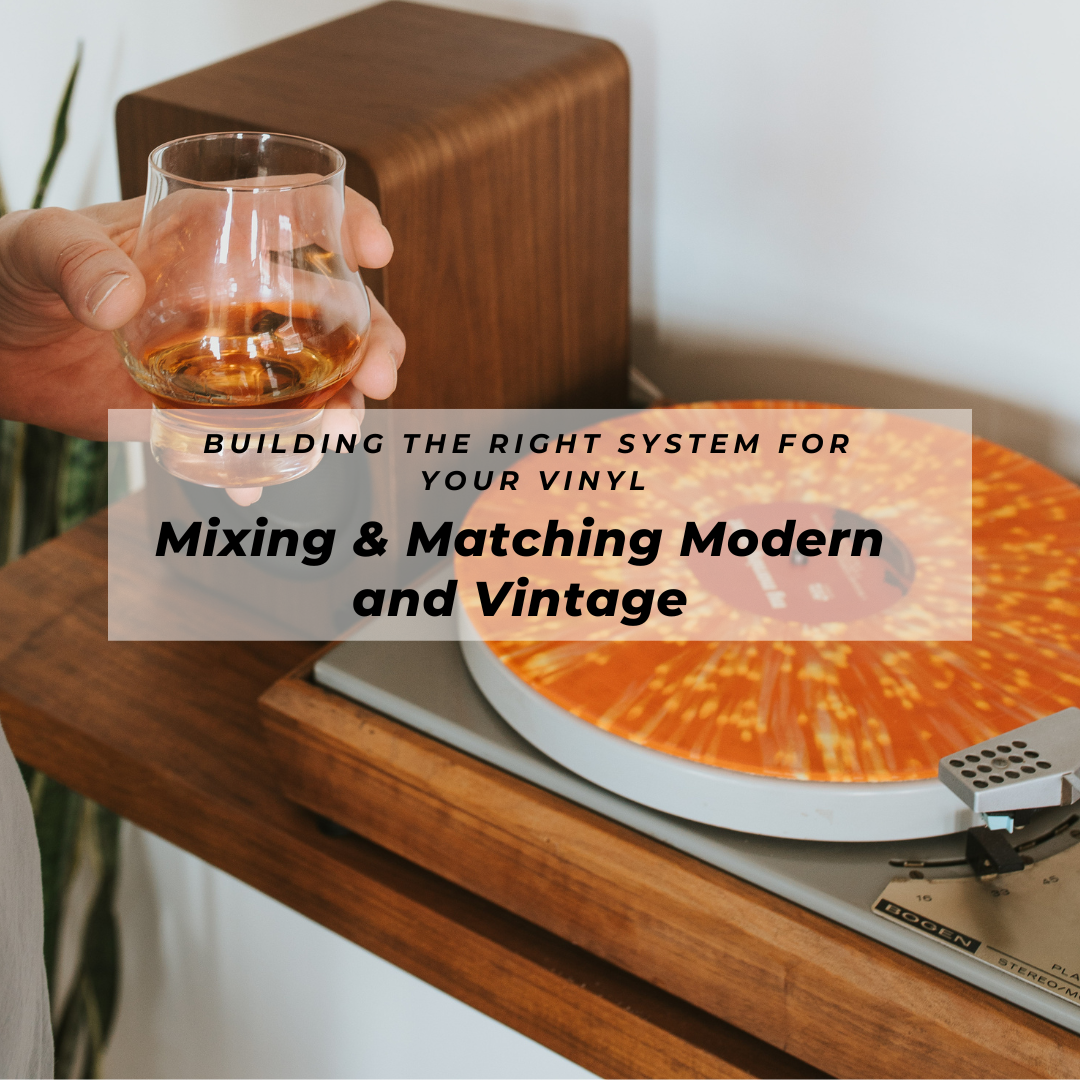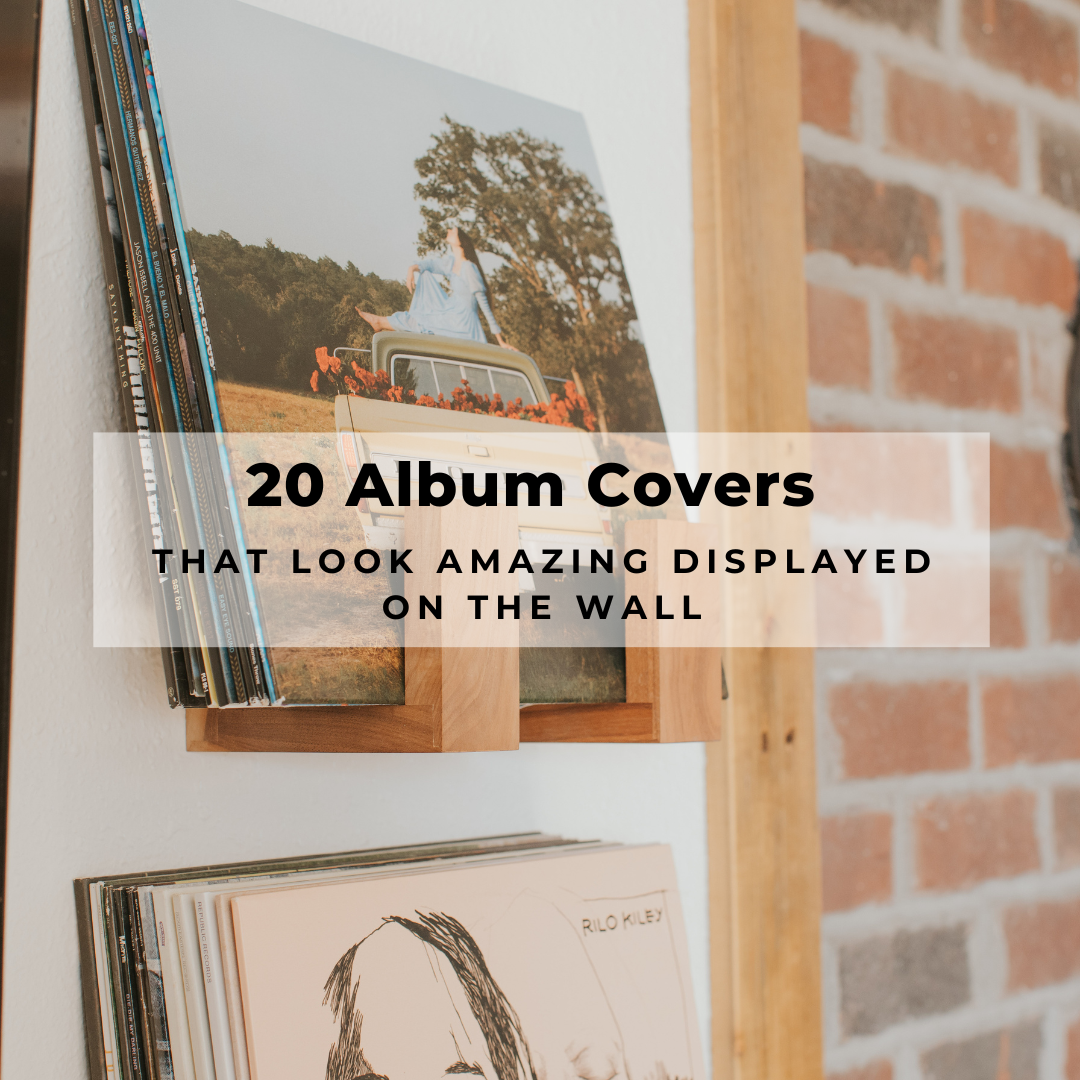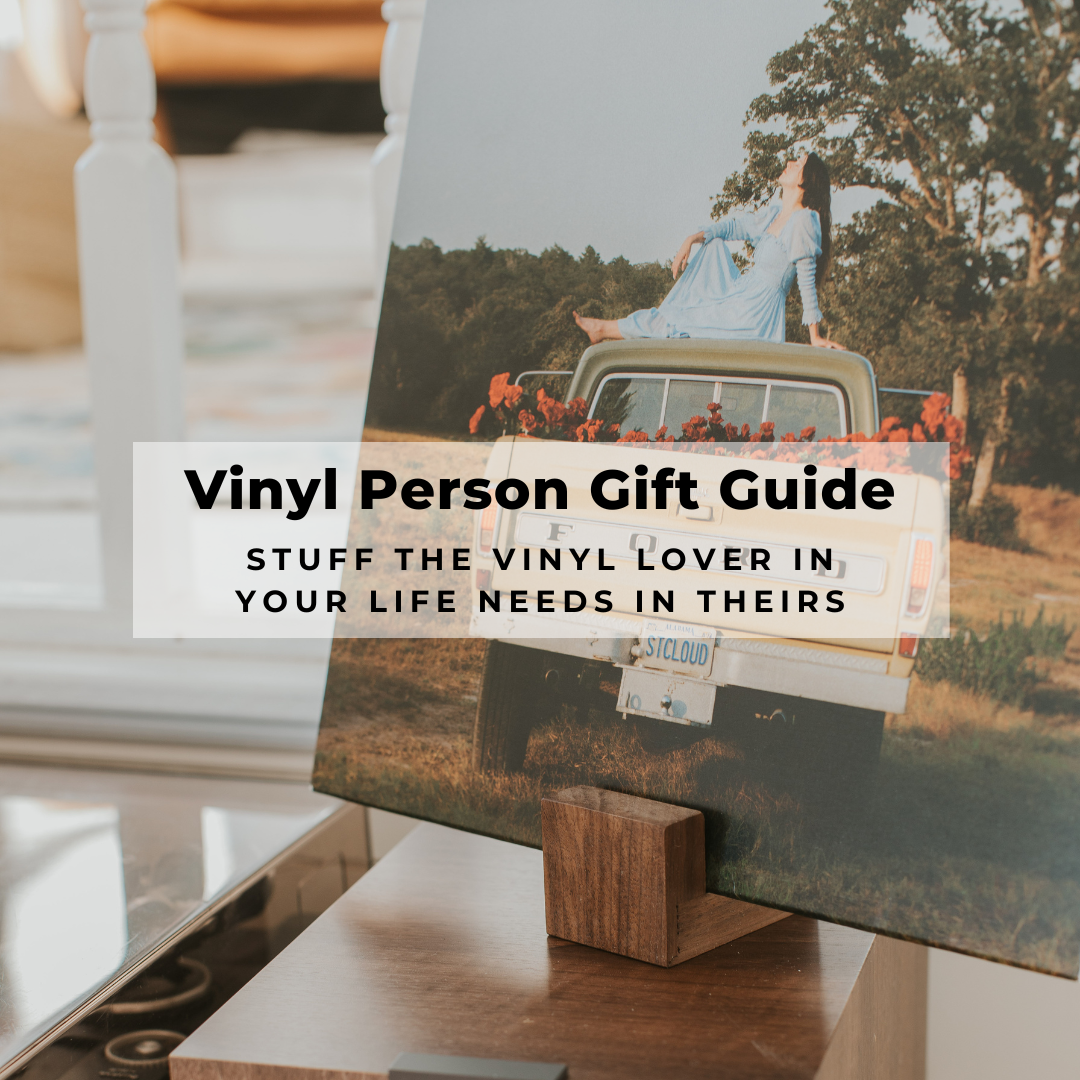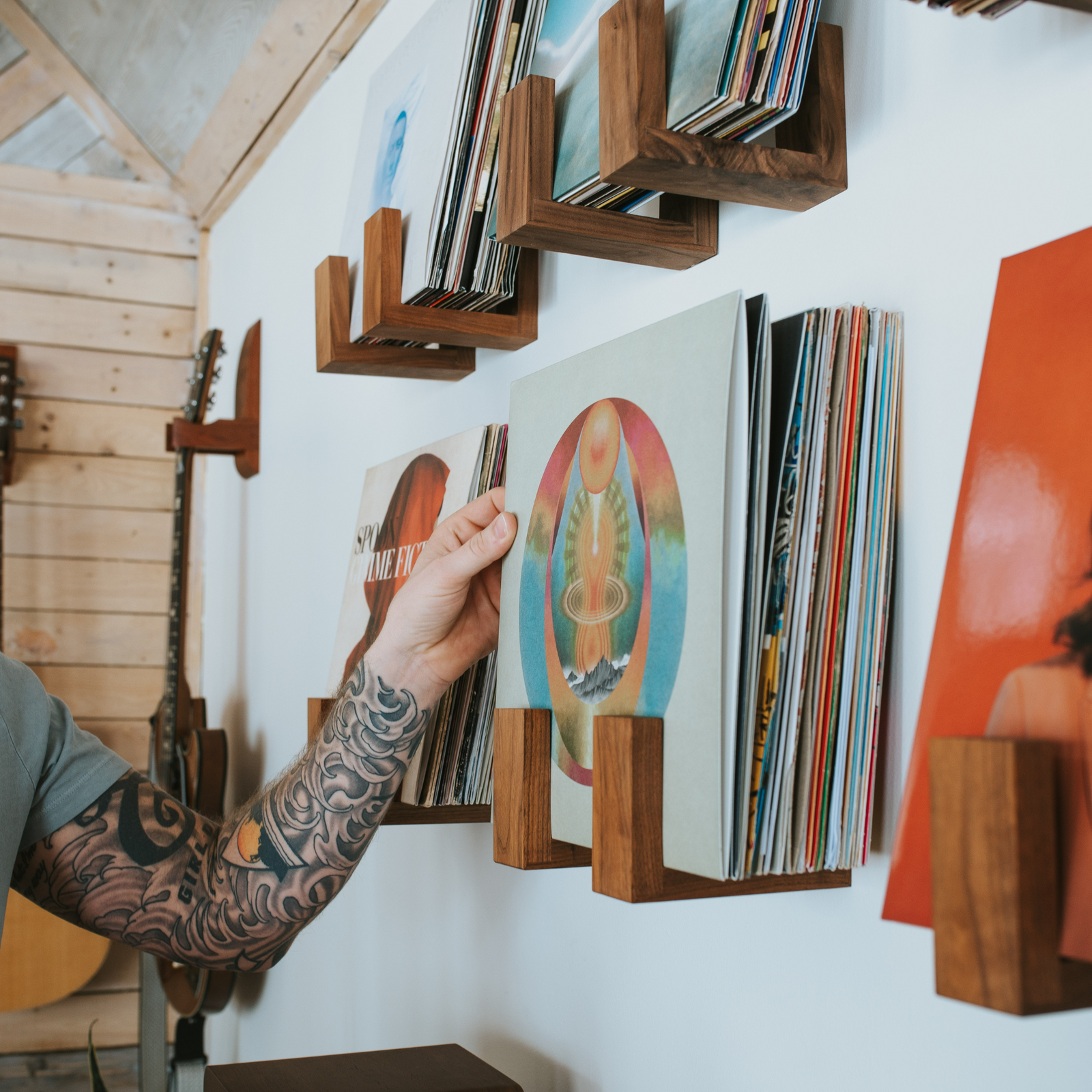The Right System for Your Vinyl: Mixing & Matching Modern and Vintage

In previous posts, we’ve talked about the advantages of vintage and modern systems. But you don’t need to choose one or the other, necessarily. You can mix and match and go hybrid.
The selling points of a hybrid system aren’t quite as obvious as with vintage or modern systems. It’s harder to brag about your classic find if you’ve got a spanking new turntable on your console. And if you’re incorporating vintage parts, that probably also means skipping the minimal footprint turntable + powered speaker configurations that modern systems can offer.
And yet, the hybrid system just might be the best. It allows you to mix and match components until you find ones that are just right. Solid components can last the rest of your life (and longer). Flexibility on provenance can enable you to find deals. Ultimately, you can end up with a system that fits you like your favorite pair of jeans.
Form Factor
When you are talking about a hybrid system, you are most likely going to want to choose a classic stereo configuration with a turntable, receiver, and passive speakers, with maybe a phono preamp depending on the receiver (or if you just like the preamp).
Image by the good folks at Turntable Lab
You could, of course, use a vintage turntable with a set of powered speakers (and we have), but experts we’ve talked to have warned us against this configuration for a couple of reasons that ring true to our experience. First, vintage turntables can be finicky (to put it kindly). “If you buy something that’s good, it goes for a long time,” says David Halford, Proprietor of Halford Loudspeakers in Memphis. “But that old Dual turntable is gone, because it broke.” [Halford clarified that his comments do not reflect on new Dual turntables. The brand has recently re-launched under new ownership.]
Don’t get us wrong, we love old turntables. We own seven between us. We’ve written love letters to them, waxing poetic about everything from their nautical proportions and retro styling. But Mr. Halford has a point. Rob has had to perform major surgery on not one but two of our Dual turntables to make them playable. You can get them repaired, but it might not be convenient, cheap, or a permanent fix (the turntables that Rob fixed actually came from a refurbisher).
A Dual Turntable that Rob rebalanced, reconditioned, and realigned. Oh, he also replaced the MDF housing with a brand new Walnut one.
On the flip side, it is possible that there’s never been a better time to buy a new turntable. “We are in a golden age of high-quality turntables right now.” Says Halford. “There are more high-quality turntables now than there ever have been.” You can buy great new turntables from independent brands like U-Turn or blue-bloods like Denon. You can get great budget options from Audio Technica or a super high-end system from Cambridge Audio. So, unless you just love that vintage look and feel (and we do), there is no reason not to get a new turntable.
U-Turn Orbit Special turntable on a walnut base with U-Turn Ethos speakers in walnut on a Deep Cut Floating Record Player Table under a Wall Cube shelf filled with records.
Of course, there are downsides to modern stuff, too. The new form factors in particular (wireless systems, powered speakers) use newer technology by definition, and that also means they can be glitchy or go obsolete if standards change (think of all those old iPhone adaptors at Goodwill). And they may not last that long (at least by stereo standards, which hold that a good piece of equipment should last a generation or two).
The High Desert Loudspeaker, hand-built speakers from High Noon
Look, we aren’t going to tell you that powered speakers suck. We (collectively) own several pairs of powered speakers. We think they sound great. They fit spaces that traditional systems just can’t. You can use them with your computer or tv as easily as with a turntable. There are omni-directional systems like the SpinBase from Andover Audio that work great if you aren’t going to be standing in one place.
But, again, the critics have a point. We’ve got a pair of powered speakers that just can’t decide what input it wants to amplify. They will switch from the record player to the tv when vinyl is spinning. They will switch from the tv to the record player when we’re watching a movie. They will attempt (ne, demand) to pair with our phone over bluetooth, even when we’re out doing yardwork and just want to listen to our headphones. So, yeah, glitchy.
Sometimes, it's best to just do what your glitchy technology tells you to... (image by Steve Jurvetson)
And while we haven’t had any of our powered speakers break on us, Halford says he gets requests to repair powered speakers every day, and he has to tell the customers they are out of luck. “I get phone calls [to fix powered speakers] every day, every time there’s a thunderstorm,” says Halford. “But you can’t even disassemble a lot of them. The amplifiers and the output devices are glued down under the boards. So they’re like a coffeemaker or a microwave: when they go bad, you can’t fix them.”
All of this is a really long way of saying that one of advantages of a traditional configuration (turntable, receiver, passive speakers) is that it’s robust. Manufacturers know how to build traditional components well. You know they will work together. And, if something goes wrong, people know how to fix them. So you can have that same stereo system for the rest of your life. And if you are willing to mix and match modern and vintage components, you just have that many more options.
Where vintage audio shines
We’ve mentioned that vintage turntables are a risky investment, but there are some things vintage can give you that you just can’t get from modern (or not at the same price)
Floor speakers
Gorgeous vintage Rogers floor speakers, photo courtesy Gear Patrol
If you’ve got the floor space, our experts say you can get a superb deal on a pair of vintage floor speakers. We have heard a couple of explanations for the availability of high-performance floor speakers (Halford says anyone who had a decent pair of bookshelf speakers has held onto them. We’ve also heard that manufacturers didn’t put much effort into bookshelf speakers in the 70s, because big, showpiece floor speakers are what people wanted.) Either way, the reason they are relatively cheap today is that floor speakers are out of fashion. Smaller form factors are more common today for the obvious reason that they fit more places and don’t have to be the focal point of a room. If you have the space (both physically and mentally), you can get some killer speakers.
A showpiece receiver
Vintage receivers are a better mechanical bet than old turntables (though you should still check that they function and maybe go over them with some contact cleaner). A decent one will sound as good as a modern receiver. The difference is the look. A lot of classic receivers feature brushed aluminum, backlit glass, and way too many knobs and switches. It is an aesthetic you will not find in modern receivers, which seem to be designed to be hidden deep in a cabinet in the darkest recesses of your home. (Looking down a list of receivers at Crutchfield, we half expected to see “low radar profile” listed as a feature.) If you want a showpiece that would look at home in Adam West’s Batcave, you need to go vintage.
Of course, old receivers have their drawbacks. They usually don’t have many inputs, and aren’t compatible with digital interfaces like HDMI or optical fiber. If you will mainly use your stereo to play records or stream music from your phone, there are adaptors you can buy for streaming or to convert a digital output to an RCA input. But if you want to connect several sources, you are better off just getting a receiver that can handle all of those inputs natively.
Where modern shines
Great sound in a small footprint
The bookshelf speaker is where modern equipment really shines. You can get some great-sounding, great-looking speakers that won’t seem out of place next to your unread James Joyce novels. And unless you live in a warehouse, bookshelf speakers are likely more than loud enough to fill a room. As we mentioned when talking about vintage floor speakers, you just won’t find that many vintage bookshelf speakers out there, because either there weren’t that many good ones out there in the first place, or the people who bought them won’t sell (maybe it’s a combination of both). Either way, you’ll have better pickings with modern bookshelves.

The takeaway
The potentially unhelpful, but hopefully liberating, conclusion to our series on building your first stereo is that you can build a great stereo no matter what type of equipment you get: vintage, modern, or a mix of both. The best system will meet your needs, match your style, fit your budget, and support how you want to listen.
Leave a comment
Comments will be approved before showing up.
Also in Blog: Deep Cuts

20 Album Covers Perfect For Displaying On The Wall

Our 2023 Vinyl Lovers Gift Guide








